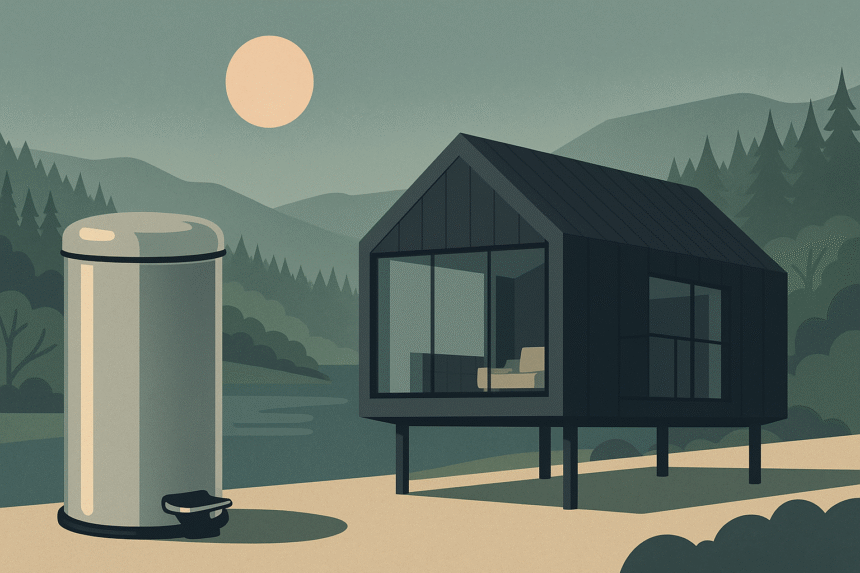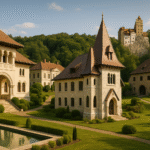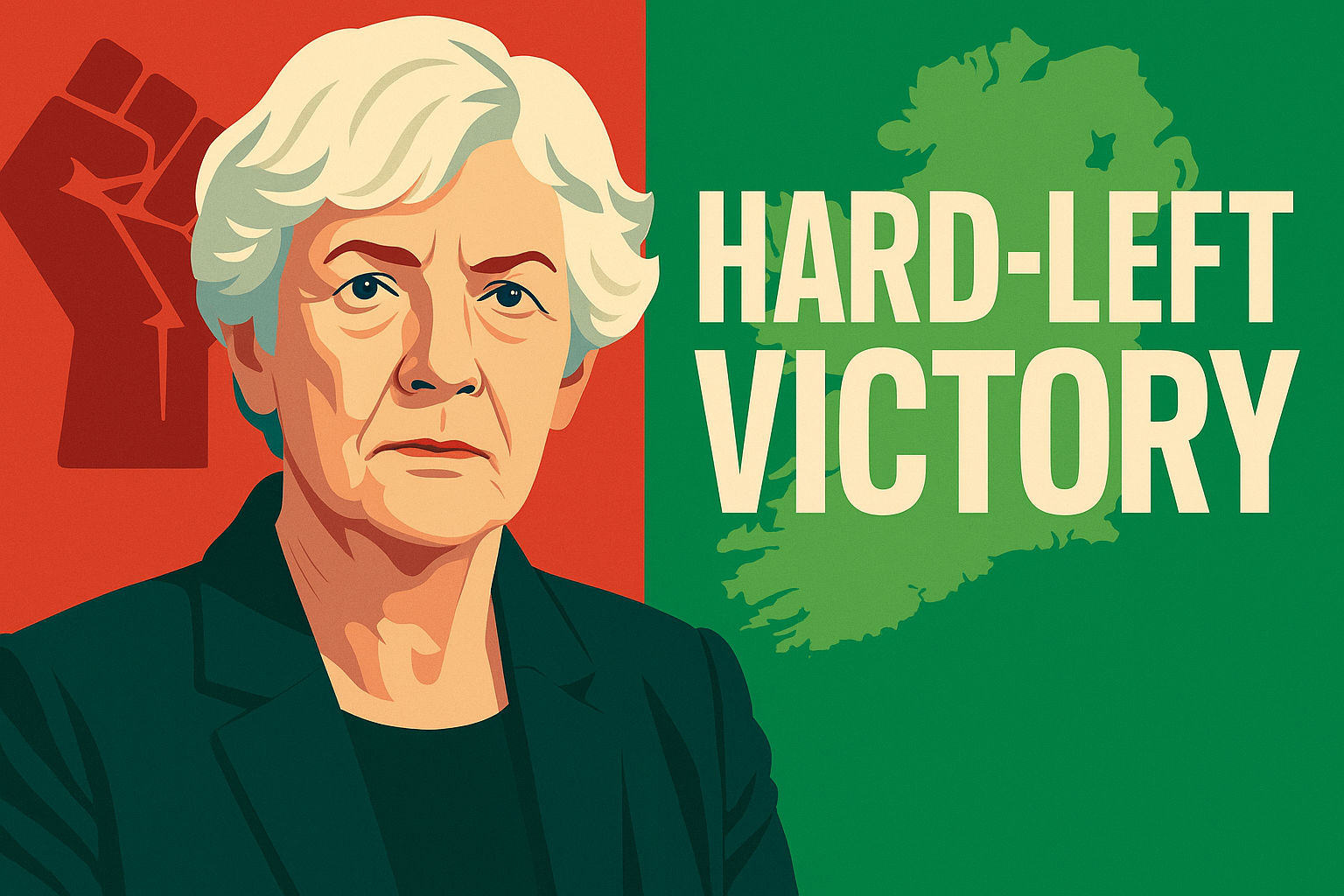On the serene shores of Lake Immeln in southern Sweden, the morning mist settles over still waters surrounded by dense forest and rocky islets. It’s here, in this tranquil landscape, that Danish design company Vipp established its first guesthouse — the Vipp Shelter — in 2014. A sleek, black 56-square-metre retreat made of glass and galvanized steel, the shelter is described by co-owner Sofie Christensen Egelund as “a human charging station.”
What began as a simple architectural experiment has grown into a global collection of 13 Vipp guesthouses spanning from Latvia to the French village of Lagrasse. Each property, distinct in form and setting, embodies Vipp’s minimalist aesthetic — refined modular kitchens, handcrafted furniture, and an atmosphere of calm functionality rooted in Danish design tradition.
From a Bin to a Brand
Vipp’s story began in 1939, when Holger Nielsen, a Danish metalworker and part-time dancing teacher, built a pedal-operated waste bin for his wife’s hair salon in Randers. Named for the “vipping” motion of its lid, the Vipp Bin quickly became a Danish household staple — found in clinics, offices, and salons across the country.
Following Nielsen’s death in 1992, his daughter Jette Egelund took over the company at a crossroads in her life. Facing personal challenges, she decided to reinvent the brand. Together with her children, Kasper and Sofie, she established a small office in Copenhagen, expanding the bin’s appeal beyond professional use by introducing home-friendly designs and colors.
Her efforts soon caught the attention of international retailers such as The Conran Shop, transforming the utilitarian bin into a design icon. The Vipp pedal bin now sits in the permanent collection at MoMA in New York and has been reimagined by more than 150 artists and designers — including Philippe Starck, Ralph Lauren, and Damien Hirst — as part of global charity art projects.
Reinventing Failure: The Birth of the Vipp Shelter
In the early 2010s, CEO Kasper Egelund envisioned the Vipp Shelter as a prefabricated, ready-to-live-in retreat for urban professionals seeking simplicity. Priced at $580,000, it was designed to be shipped anywhere in the world — a plug-and-play home in nature.
Initial sales were disappointing, with only one unit sold. Yet what seemed like a commercial failure became a turning point. The shelter evolved into a showcase for Vipp’s design philosophy, offering a tangible experience of living within the brand’s aesthetic.
“All of a sudden we had a stage,” Sofie recalls. “Architects and clients could see exactly what it meant to live with Vipp.” From that moment, the company began expanding its architectural hospitality concept — crafting immersive guesthouses that reflect both Danish design principles and local culture.
Design Meets Destination
Each Vipp property is unique, from a minimalist tunnel house in Tasmania to a stone borda in the Andorran mountains, all united by refined interiors and handcrafted furniture.
In Copenhagen, the Vipp Loft, completed in 2022 above the company’s headquarters in Islands Brygge, symbolizes the brand’s evolution. Once an industrial harbor, the area is now a thriving creative hub. The loft — designed with architect David Thulstrup — features a spacious, light-filled interior that functions as both a private residence and a living design gallery.
The company’s 56 employees operate out of a complex that includes a converted printing factory, a stable turned concert hall, and the Vipp Garage — an event venue with a rooftop terrace. Jette’s original office, located in a former pencil factory, still houses her personal apartment and the Pencil Case, a rentable guest suite filled with art and music.
A Global Design Journey
The Vipp guesthouses are designed to feel personal, not corporate. “It should feel like a friend gave you the keys to their home,” says Sofie. This philosophy extends to new projects such as Vipp Lofoten in Norway — a wooden cabin on stilts that merges Nordic fisherman’s huts with modern architecture — and the Vipp Townhouse in France, a restored 14th-century property in Lagrasse.
Meanwhile, Sofie and her husband Frank Christensen Egelund lead the company’s North American operations from their TriBeCa loft, which doubles as a showroom. After completing the Vipp Todos Santos retreat in Mexico in 2024, they are now working on Vipp Pavilion in Sullivan County, New York — a 110-square-metre collaboration with Los Angeles architects Johnston Marklee that represents the brand’s boldest architectural expression to date.
Looking ahead, Kasper envisions Vipp shelters in destinations ranging from Iceland to the Scottish Highlands and Australia. Collaborations with acclaimed designers such as Ilse Crawford, John Pawson, and Studio KO are already in discussion, expanding Vipp’s creative network and global reach.
A Family Legacy Rooted in Design
Despite its international success — and selling over a million bins worldwide — Vipp remains a family-run company, free from external investors. This independence allows the Egelunds to pursue projects driven by passion rather than profit.
“The joy of Vipp,” Kasper explains, “is that we can grow organically and meaningfully.” What began as a simple household object has evolved into a universe of architecture, hospitality, and design — one that reflects a deeply Scandinavian philosophy: functionality, craftsmanship, and harmony with nature.
“When you build a house, you make roots,” Kasper says. “You connect to a place and its people. That means something.”








